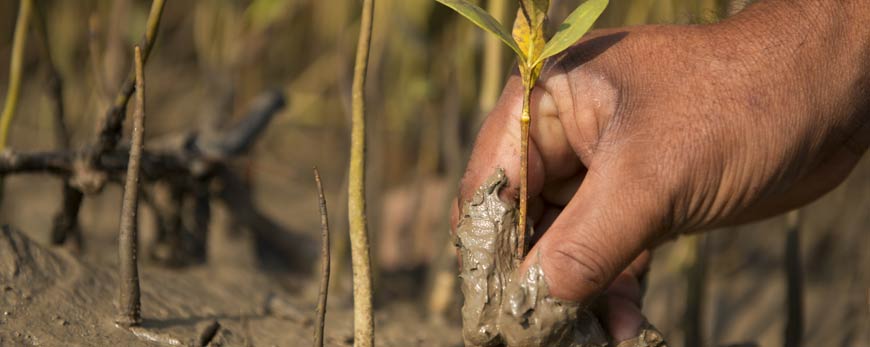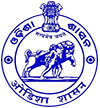
Chilika is the largest lagoon along the east coast of India and a Ramsar site. Chilika is a unique assemblage of marine, brackish and fresh water eco-system with estuarine characters and is a hotspot of biodiversity that shelters a number of endangered species listed in the IUCN red list of threatened species. It is an avian grandeur and the wintering ground for more than one million migratory bird. The highly productive eco-system of the lagoon with its rich fishery resources sustains the livelihood of more than 0.15 million fisher folk who live in and around the lagoon. Chilika ecosystem had been encountering a number of problem and threat like – siltation, shrinkage of water spread area, choking of the inlet channel as well as shifting of the mouth connecting to the sea, decrease in salinity and fishery resources, proliferation of fresh water invasive species, and an over-all loss of biodiversity more so the decline in the productivity adversely affecting the livelihood of the community who depend on it. The lagoon was placed in the Montreux record in the year 1993 by Ramsar bureau due to change in its ecological characters. Being concerned with the degradation of the lagoon ecosystem Chilika Development Authority (CDA) was created in1992, for restoration and overall development of the lagoon.
The spatial and temporal salinity gradients that exist in Chilika give it the unique characteristics of an estuarine eco-system, exercising a continuous and selective influence on its biota. The transformation of the lagoon towards a fresh water ecosystem was considered as a potential threat to its unique ecosystem. To address this problem, CDA commissioned the services of the premier institutes of the country like National Institute of Oceanography, (NIO) Goa, to study the wave climate of the inlet, long shore sediment transport along the shore and the bathymetry of the lead channel. The Central Water and Power Research Station (CWPRS), Pune, carried out the hydrological and two dimensional mathematical model studies. The studies concluded that the tidal influx into the lagoon was considerably reduced because of the shoal formation along the lead channel and continuous shifting of the mouth that resulted in significant hydraulic head loss.
Opening of a new mouth
Following the recommendations of the CWPRS, an artificial mouth was opened on 23rd September 2000, which reduced the length of the outflow channel by 18 km. This is considered as historic in the restoration ecology. Desiltation of the lead channel was completed before opening the new mouth. The environment impact assessment and the monitoring of the lagoon ecosystem were carried out by National Institute of Oceanography, Goa, before and after the intervention. Monitoring results indicated that there is a marked improvement in the lagoon ecosystem.
The other components of the restoration program were community-based treatment of the catchment on a micro watershed basis, restoration of Nalabana bird Sanctuary and improvement of bird habitats with the active participation of the community. Awareness campaign and environmental education, development of a visitor center, improvements of communication network, close monitoring of the lagoon and a research center on wetland management.
The opening of the artificial mouth and the desiltation of the lead channel not only rejuvenated the lagoon ecosystem but also immensely benefited the fisher folk whose average annual income increased by more than Rs. 50,000 per annum per family. This has resulted in the desired improvement of the salinity regime of the lagoon. Marked improvement in the fishery resources of the lagoon as the gradual reduction in the salinity from the lagoon mouth to the lagoon proper after the opening of the mouth is providing the desirable sense of direction for the eurohaline forms to enter into the lagoon from the sea. This is facilitating the auto-recruitment of the fish, prawn, and crab juvenile into the lagoon resulting in remarkable improvement of the fishery resources. The fish landing, which had declined on an average to mere 1600 MTs, the fish landing during the year 2000-2001 improved to 4889.21 MT and seven months landing after the opening of new mouth i.e. from October 2000 to March 2001 alone was 3718.44 MT. During the year 2001-2002, it recorded to be 11988.88 MT. It registered an all time high record of 14,053.22 MT during 2003-04. The fish landing is recorded to be 13,260.37 MT during 2004-05. It is registered to be 12224.91 MT during 2005-2006. The crab landing which dwindled to a low of 10 MT in 1999-2000 improved to 161.89 in 2004-2005. During the year 2005-2006, total prawn landing was registered to be 4296.02 MT and Crab landing was recorded to be 154.08 MT. This has facilitated the self-initiated good practices by the community like regulation of the mesh size, ban on juvenile poaching etc. Due to improvement of the salinity gradient there is phenomenal decrease of the fresh water invasive species by 172 sq kilometers and improvement of the sea grass bed. The improvement of the tidal flux has resulted in the better flushing of the sediment to the sea through the outlet channel. There is a significant improvement in the water level variation during the tidal cycle, which has turned the lagoon in to pulsing mode, thus making it more productive by nourishment with additional nutrient and flushing out of the detritus and waste products efficiently.
The hydrological interventions taken for the restoration of the lagoon have resulted in considerable improvement of its fishery resources, water quality, positive impact on the biodiversity and an overall improvement of the ecosystem of the lagoon. This has significantly contributed towards the increase in the per capita income of the community who depend on the lagoon for their livelihood. The increase in the productivity level both in the wetland as well as in the watershed due to the good environmental practices has facilitated the economic improvement of the community. The community participation, linkage with the various national and international institutions, intensive monitoring and assessment system are some of the uniqueness of the management practices adopted by CDA for restoration of this unique wetland. The restoration approach of CDA is considered as most appropriate and unique in the history of restoration ecology. Ramsar Advisory Mission, based on their assessment of the the management interventions, have recommended for removal of Chilika lagoon from the Montreux record. Chilika Development Authority is also conferred with prestigious Ramsar wetland Award-2002, in view of its outstanding achievements in the field of restoration and wise use of the wetlands, as well as the impressive way in which local communities have been involved in these activities.



